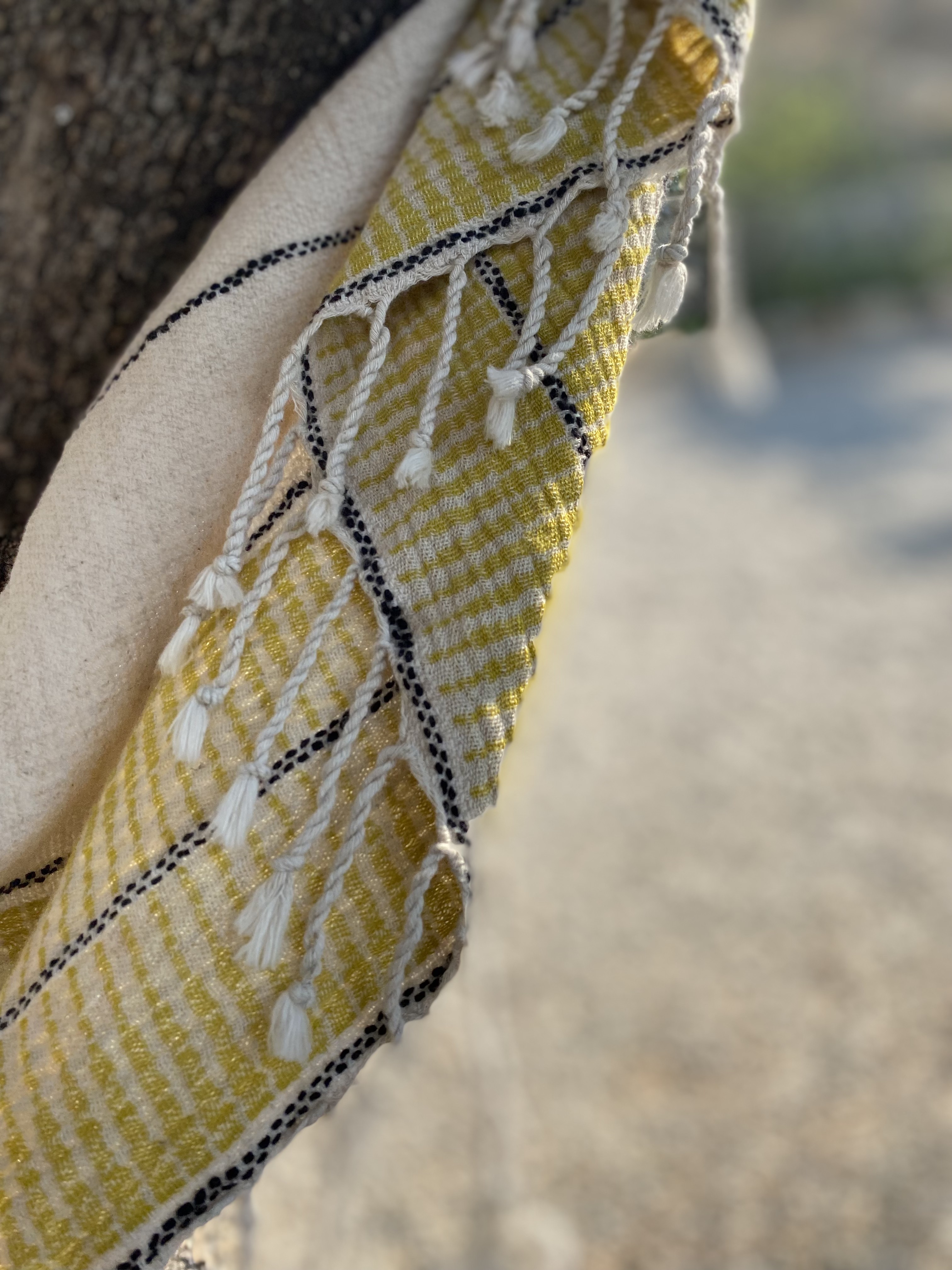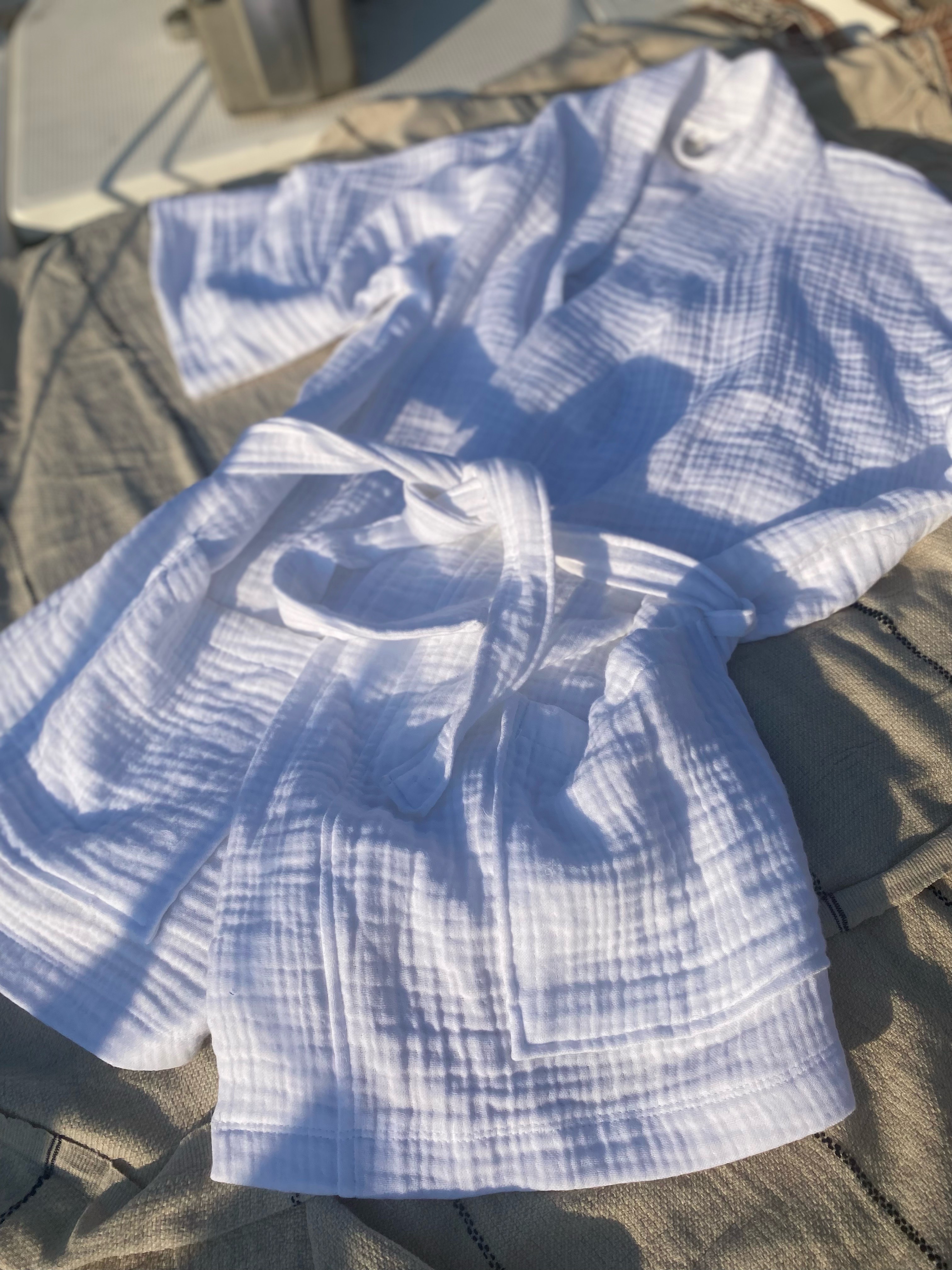Fabric of Health: Embracing the Wellness Benefits of Natural Fibers Over Synthetic Fabrics
Posted by Nilgun Auriemma on Nov 9th 2024
In our fast-paced modern lives, we often overlook the impact that our clothing choices can have on our health. Synthetic fabrics have become pervasive in the fashion industry, offering affordability and versatility. However, as a holistic health coach, my mission is to shed light on the health hazards associated with wearing synthetic fabrics and advocate for the numerous wellness benefits of choosing natural fibers like cotton and linen.
Understanding the Hazards of Synthetic Fabrics:
1. Breathability Matters: Synthetic fabrics, often derived from petroleum-based chemicals, lack the breathability that our skin craves. The inability to allow proper air circulation can lead to skin irritation, rashes, and exacerbate existing skin conditions. On the contrary, natural fabrics like cotton and linen are inherently breathable, promoting healthier skin by allowing it to breathe.
2. Toxic Chemicals and Skin Sensitivities: The production of synthetic fabrics involves a myriad of chemicals, including resins, dyes, and finishing agents. These substances can cause allergic reactions and skin sensitivities, contributing to chronic skin conditions. Opting for natural fabrics, especially organic cotton and linen, reduces exposure to such potentially harmful chemicals, fostering skin health.
3. Microfiber Pollution: The prevalence of synthetic fabrics contributes significantly to microfiber pollution. Tiny plastic fibers shed during washing find their way into water bodies, harming marine life and entering our food chain. By choosing natural fabrics, individuals contribute to reducing their environmental footprint and promote a healthier ecosystem.
4. Temperature Regulation: Synthetic fabrics often lack the ability to regulate body temperature effectively. This can lead to discomfort, excessive sweating, and even disruption of the body's natural thermoregulation processes. On the contrary, cotton and linen fabrics excel in moisture absorption and evaporation, providing optimal comfort in various climates.
5. Antibacterial Properties: Natural fibers like cotton possess inherent antibacterial properties that contribute to maintaining skin health. These fabrics inhibit the growth of bacteria, minimizing the risk of infections. In contrast, synthetic fabrics may create an environment conducive to bacterial growth, leading to unpleasant odors and potential skin infections.6. Electrostatic Charges and EMF Sensitivity: Synthetic fabrics are known to generate static electricity, leading to discomfort and potential health concerns. Moreover, individuals sensitive to electromagnetic fields (EMFs) may find that synthetic fabrics intensify their symptoms. Natural fibers like cotton and linen do not generate static charges and may offer a more comfortable and supportive choice for those concerned about EMF sensitivity.
Benefits of Choosing Natural Fabrics:
1. Breathability and Comfort: Cotton and linen, being natural fibers, allow air to circulate freely through the fabric, keeping the body cool and comfortable. This breathability is crucial for maintaining healthy skin, especially in warmer climates or during physical activities.
2. Reduced Allergies and Sensitivities: Natural fabrics, especially when organic, minimize exposure to toxic chemicals, reducing the risk of skin allergies and sensitivities. Those prone to skin issues can benefit significantly from choosing cotton and linen over synthetic alternatives.
3. Environmental Sustainability: Opting for natural fabrics supports sustainable and eco-friendly practices. Cotton and linen cultivation generally involves fewer pesticides and chemicals, reducing environmental impact. Additionally, these fabrics are biodegradable, contributing to a healthier planet.
4. Moisture Absorption and Evaporation: Cotton and linen excel in moisture absorption and evaporation, making them ideal for managing sweat and promoting a dry, comfortable environment. This property is especially beneficial for individuals leading active lifestyles or residing in humid climates.
5. Hypoallergenic Properties: Cotton, in particular, is known for its hypoallergenic properties, making it suitable for individuals with sensitive skin or allergies. Choosing natural fabrics can provide a protective barrier against skin irritants, fostering overall skin health.
6. Thermal Regulation: Natural fabrics have the remarkable ability to adapt to the body's temperature, providing warmth in cooler weather and coolness in warmer conditions. This natural thermal regulation contributes to enhanced comfort and well-being.
Making the Switch: A Step Towards Holistic Well-being:
In a world where our choices resonate beyond our immediate surroundings, the decision to embrace natural fabrics is not merely a style statement; it's a conscious commitment to holistic well-being. By understanding the health hazards associated with synthetic fabrics and appreciating the myriad benefits of natural fibers like cotton and linen, individuals can make informed choices that positively impact their health and the environment.
As a holistic health coach, my advocacy extends beyond traditional healthcare practices to encompass every facet of an individual's life. Clothing, often considered a second skin, should be chosen with the same care and consideration given to the food we consume and the environments we inhabit. Embracing natural fabrics is not just a fashion trend; it's a fundamental shift towards prioritizing health, sustainability, and a harmonious coexistence with our planet. Let us be mindful of the fabric we weave into the fabric of our lives, choosing the threads of well-being and vitality that natural fibers like cotton and linen graciously offer.
Disclaimer: Not a medical advice.


